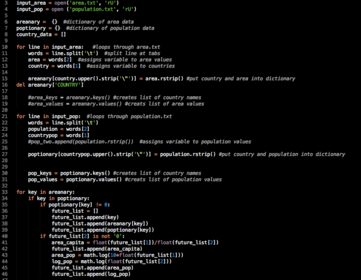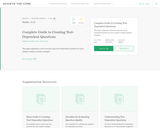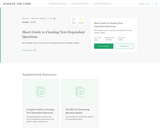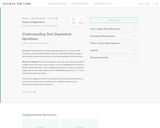
Clear checklist for evaluating the quality of text-dependent questions.
- Subject:
- Arts and Humanities
- Material Type:
- Teaching/Learning Strategy
- Provider:
- OER Commons
- Provider Set:
- Common Core Reference Collection
- Date Added:
- 01/02/2013


Clear checklist for evaluating the quality of text-dependent questions.

Thorough explanation of the how and why of text-dependent questions for close, analytic reading. Includes examples.
The Common Core State Standards for reading strongly focus on students gathering evidence, knowledge, and insight from what they read. Indeed, eighty to ninety percent of the Reading Standards in each grade require text dependent analysis; accordingly, aligned curriculum materials should have a similar percentage of text dependent questions.
As the name suggests, a text dependent question specifically asks a question that can only be answered by referring explicitly back to the text being read. It does not rely on any particular background information extraneous to the text nor depend on students having other experiences or knowledge; instead it privileges the text itself and what students can extract from what is before them.

Seven simple steps to create your own questions for close analytic reading.

This module is suitable for K-12 ELA / Literacy instructors, as well as teachers of history/social studies, science, and technical subjects.